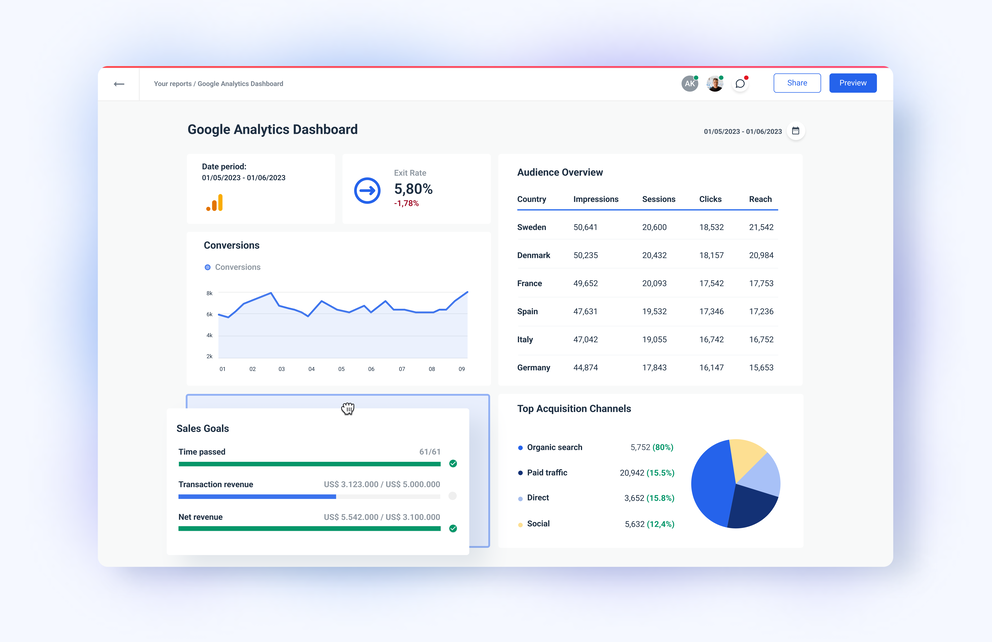Secret Factors To Consider for Marketing Professionals: When Does the Google Analytics Tracking Code Send an Event Hit to Analytics?
Master Site Insights With Accurate Google Analytics Monitoring Code
The efficient use of Google Analytics hinges on the precise application of its monitoring code, a basic action commonly neglected by site proprietors. What are the common pitfalls that could undermine your tracking efforts, and exactly how can you make certain accuracy in your strategy?
Comprehending Google Analytics Fundamentals
Google Analytics is a crucial tool for website owners and marketers, offering important insights right into user actions and site efficiency. At its core, Google Analytics accumulates data concerning visitors to a web site, permitting users to examine metrics such as website traffic sources, individual involvement, and conversion prices. Understanding these basics is critical for optimizing a web site's performance and enhancing user experience.
The system uses cookies to track communications, tape-recording information such as web page sights, session durations, and bounce prices. This details is aggregated and presented with personalized control panels, enabling individuals to picture fads over time. Key efficiency indicators (KPIs) can be monitored, such as the overall variety of users, new versus returning visitors, and the geographic distribution of the audience.
Moreover, Google Analytics provides segmentation functions, permitting customers to separate details website traffic resources or user demographics for more targeted analysis. By understanding these fundamental components, internet site proprietors can make educated decisions about content strategy, marketing campaigns, and total website renovations. Inevitably, recognizing Google Analytics fundamentals is crucial for leveraging data to drive development and attain organization goals efficiently.
Establishing Your Monitoring Code

Replicate the given monitoring code and paste it into the HTML of your website. This ensures that the monitoring code tons before any kind of various other content, allowing it to record data accurately.
After installment, verify that the monitoring code is working correctly by utilizing Google Tag Aide or the Real-Time reports in Google Analytics - when does the google analytics tracking code send an event hit to analytics?. This action is important to verify that your data collection is energetic and accurate, establishing the structure for insightful analysis
Common Monitoring Code Issues
This may happen when the monitoring code is positioned in the wrong section of the internet site's HTML, frequently leading to insufficient or absent data. In addition, having numerous instances of the tracking code on a solitary web page can result in filled with air metrics, as user interactions might be counted extra than once.
An additional problem arises from making use of ad blockers, which can avoid the tracking code from executing entirely, therefore skewing information. when does the google analytics tracking code send an event hit to analytics?. In addition, failing to configure filters properly can cause the exemption of important web traffic sources or the addition of unwanted recommendation spam, misshaping the data gathered
Site proprietors might likewise ignore the relevance of monitoring code updates, specifically when moving to Google Analytics 4 (GA4) from Universal Analytics. Last but not least, insufficient testing prior to releasing adjustments can cause undetected errors in the tracking code, even more making complex data reliability. Addressing these common issues is essential for making sure exact monitoring and informative analytics.
Studying Web Site Information Successfully
Precise data collection is just the initial action in leveraging Google Analytics; the actual worth hinges on properly analyzing that data to drive educated decision-making. To accomplish this, it is vital to determine key efficiency indicators (KPIs) that straighten with your company objectives. Emphasis on metrics such as conversion rates, customer engagement, and website traffic resources, as these will give understandings into customer habits her response and the overall effectiveness of your internet site.
Using Google Analytics' division functions allows for a much deeper understanding of your audience. By breaking down information into specific demographics, habits, and traffic channels, you can reveal patterns and patterns that educate targeted approaches. Carrying out custom-made reports and control panels can improve this process, allowing fast access to essential data.
In addition, routinely examining data patterns with time assists to recognize abnormalities and opportunities for enhancement. Make use of visualization tools to existing data in a conveniently absorbable format, helping with extra efficient interaction with stakeholders. Inevitably, the ability to examine internet site information efficiently equips companies to make critical decisions that improve customer experience, enhance advertising and marketing efforts, and drive growth.

Finest Practices for Accurate Tracking
Implementing efficient tracking techniques is important for obtaining trusted data in Google Analytics. To ensure precise tracking, begin by correctly setting up the Google Analytics tracking code on every web page of your site. This can be completed with a tag supervisor or by directly installing the code into the HTML.
Next, configure your Google Analytics account to leave out interior website traffic. This can be done by setting up filters this article that determine and remove visits from your organization's IP address, therefore preventing skewed information. In addition, utilize event tracking to keep track of details user interactions, such as downloads or video clip plays, which typical page views may ignore.
Frequently examine your monitoring setup to confirm that all functions, such as objectives and ecommerce tracking, are working properly. Develop a consistent naming convention for your occasions and projects to help with less complicated coverage and evaluation.
Finally, take into consideration leveraging UTM specifications for campaigns to acquire understandings into the performance of different advertising efforts. By complying with these finest methods, you can improve the accuracy of your data collection and evaluation, inevitably bring about even more educated decision-making for your web site.
Final Thought
By making certain the tracking code is correctly placed and regularly audited, web site owners can capture crucial individual interaction information, thus promoting the identification of essential performance signs. Eventually, a durable tracking structure boosts the ability to drive engagement and boost general web site efficiency.

Not enough testing before launching modifications can result in unseen errors in the tracking code, better making complex data reliability.Implementing reliable monitoring practices is critical for acquiring trusted information in Google Analytics. By making certain the monitoring click for more info code is correctly positioned and consistently investigated, site proprietors can catch vital customer interaction information, therefore facilitating the recognition of essential performance indicators.